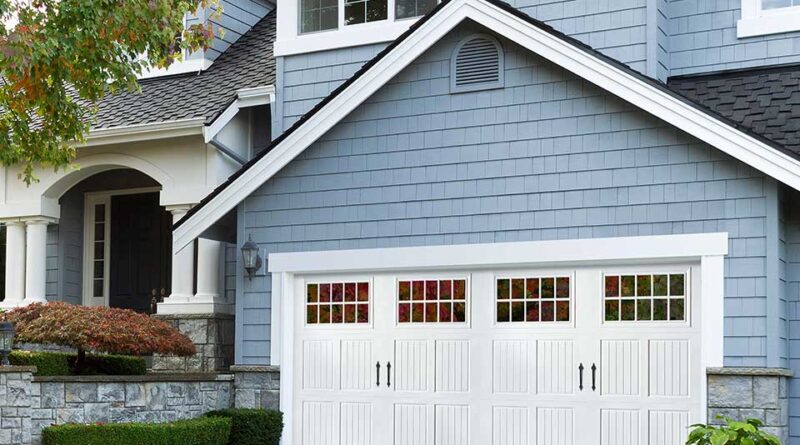Common Garage Door Problems and How to Fix Them
Garage doors are an essential part of our daily lives, providing security and convenience. However, like any other mechanical system, they can encounter problems over time. Dealing with a malfunctioning garage door can be frustrating, but many common issues can be resolved without the need for professional help. In this article, we will explore some of the most common garage door problems and provide practical solutions for fixing them.
**1. ** Noisy Garage Door
A noisy garage door can be irritating and may signal underlying issues. To address this problem:
- Tighten Loose Hardware: Inspect the door’s hardware, such as nuts, bolts, and screws, and tighten any that are loose.
- Lubricate Moving Parts: Apply lubricant to the moving parts, including rollers, hinges, and tracks. This will reduce friction and noise.
- Replace Worn Rollers: If your garage door rollers are worn out, they can create noise. Consider replacing them with nylon or silicone rollers, which are quieter.
**2. ** Garage Door Won’t Open or Close
A garage door that refuses to open or close can disrupt your daily routine. Here’s how to troubleshoot this issue:
- Check the Remote and Wall Switch: Ensure that the remote control and wall switch have working batteries and are functioning correctly.
- Inspect the Safety Sensors: Make sure the safety sensors located near the bottom of the door are clean and aligned. If they are misaligned or obstructed, the door won’t operate.
- Examine the Tracks: Check the tracks for obstructions or damage. Even small dents can affect the door’s movement.
- Adjust the Limit Switch: The limit switch, which controls the door’s open and close positions, may need adjustment. Consult your owner’s manual for instructions on how to adjust it properly.
**3. ** Slow-Moving Garage Door
A garage door that moves slowly can be frustrating. To increase its speed:
- Lubricate Moving Parts: As with a noisy door, lubricating moving parts can improve the door’s speed.
- Tighten Springs: Check the tension of the springs on your garage door. If they are too loose, they can slow down the door’s movement.
**4. ** Uneven Closing of the Garage Door
When a garage door closes unevenly, it can leave gaps or pose a safety risk. To resolve this problem:
- Check for Obstructions: Make sure there are no objects in the door’s path, which can cause it to close unevenly.
- Inspect the Tracks: Examine the tracks for damage or misalignment. If needed, adjust or replace them.
- Balance the Door: An unbalanced door can close unevenly. You may need to adjust the tension of the springs or seek professional assistance.
**5. ** Garage Door Reverses
If your garage door starts to close but then immediately reverses, it may indicate an issue with the safety sensors or the opener’s settings. To fix this:
- Clean the Sensors: Ensure the safety sensors are clean and free from obstructions. Align them properly to face each other.
- Adjust the Sensitivity: You can usually adjust the opener’s sensitivity settings to prevent it from reversing unnecessarily. Consult your owner’s manual for guidance.
**6. ** Garage Door Remote Issues
When your garage door remote isn’t working correctly, it can be due to several reasons:
- Replace Batteries: Start by replacing the remote’s batteries. Sometimes, a simple battery change is all it takes.
- Reprogram the Remote: If replacing the batteries doesn’t work, try reprogramming the remote according to the manufacturer’s instructions.
**7. ** Weather Seal Damage
The weather seal along the bottom of your garage door can wear out over time, letting in pests, drafts, and moisture. To fix this issue:
- Replace the Weather Seal: Purchase a new weather seal and replace the old one by following the manufacturer’s instructions. This will help keep your garage protected from the elements.
**8. ** Garage Door Opener Malfunction
If the garage door opener itself is malfunctioning, there are a few steps to consider:
- Check Power Supply: Ensure that the opener is properly connected to power and the outlet is functioning.
- Inspect the Wiring: Examine the wiring to the opener and the wall switch for any damage or loose connections.
- Consult a Professional: If you’ve tried these steps and the opener still isn’t working, it might be time to call a professional technician for further diagnosis and repair.
In conclusion, many common garage door problems can be resolved with some DIY troubleshooting. Regular maintenance and addressing issues promptly can extend the life of your garage door and prevent costly repairs. However, if you’re unsure about how to fix a problem or the issue persists, it’s wise to seek professional assistance to ensure the safety and functionality of your garage door.
